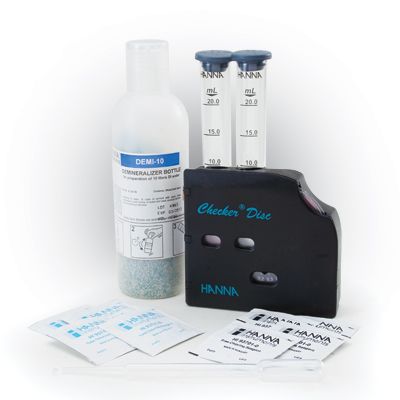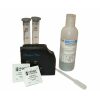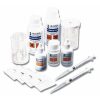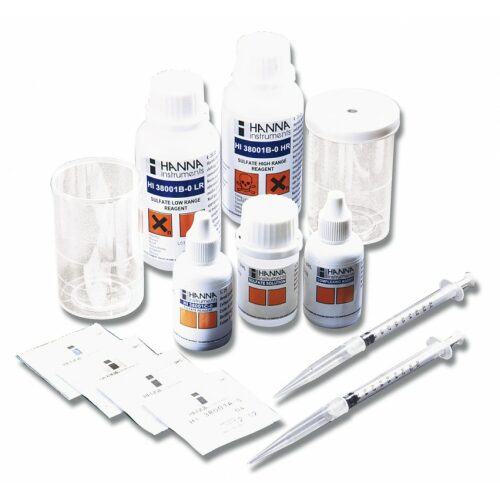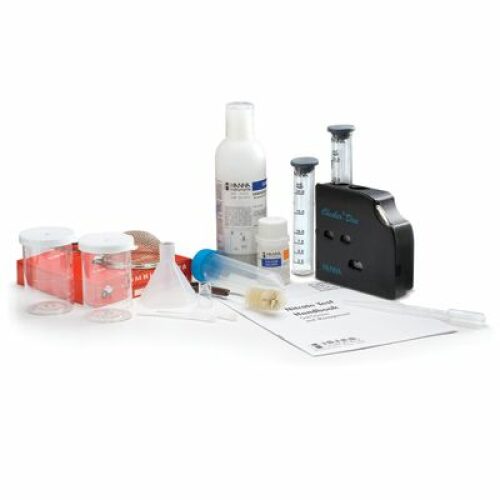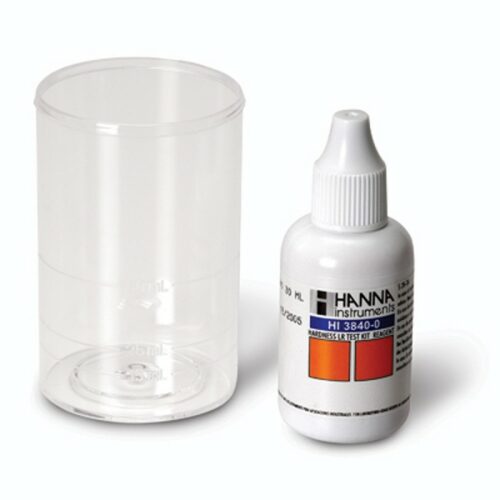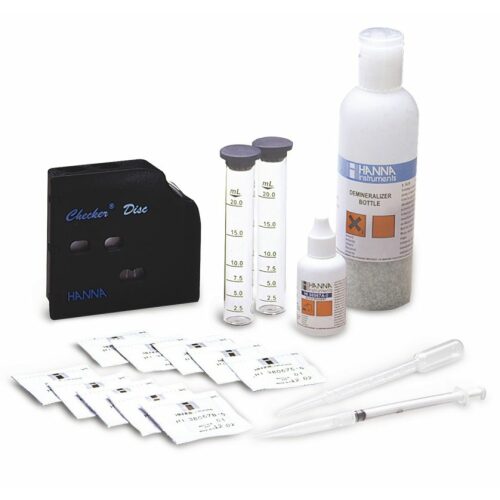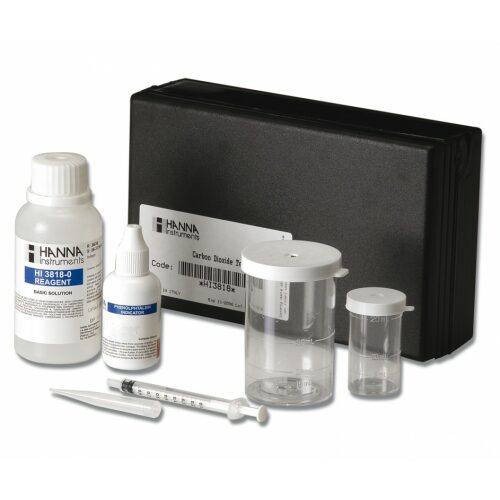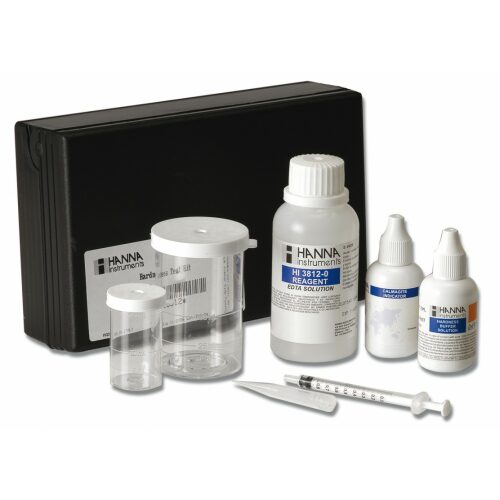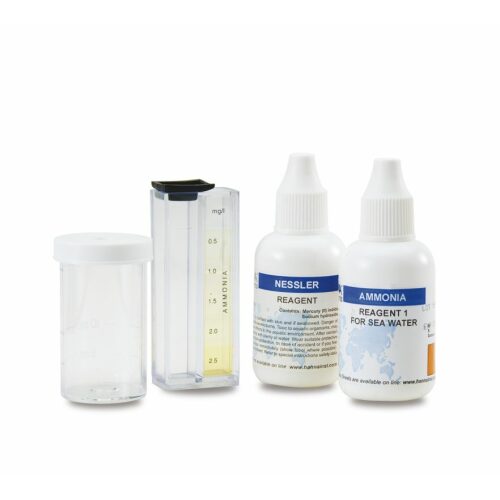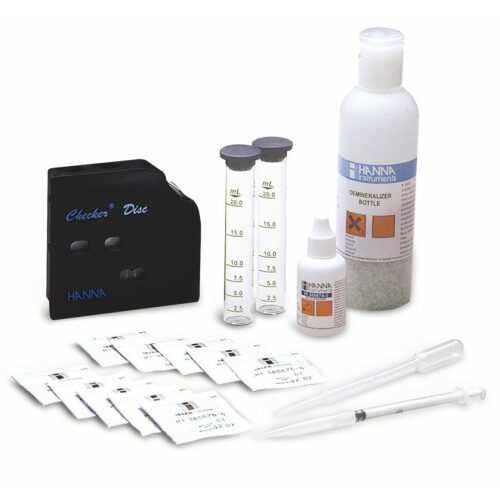Subtotal: ฿7,900.00
HI38017 CTK Chlorine Free & Total
฿4,815.00
Chemical test kit for the determination of free and total chlorine in 0.0-0.70/0.0-3.5 mg / l (ppm).
0 in stock
Free chlorine reacts with ammonium ions and organic compounds to form chlorine compounds resulting in diminished disinfecting capabilities compared with free chlorine. These chlorine compounds together with chloramines form combined chlorine. Combined chlorine and excess free chlorine together result in total chlorine. While free chlorine has a much higher disinfectant potential, combined chlorine has a much higher stability and has a lesser volatility. There should be sufficient levels of unreacted free chlorine for adequate disinfection, but not so much as to become harmful.
Order Information:
HI 39017 test kits come with HI 93701-0 free chlorine reagent (100 packets), HI 93711-0 total chlorine reagent (100 packets), demineralizer bottle with filter cap for 12 L, checker disc, glass vials with caps (2) and 3 mL plastic pipettes
![]() Manual: Download
Manual: Download
| Method | Checker Disc | |
| Range | 0.00-0.70 mg/L 0.0-3.5 mg/L |
|
| Smallest Increment | 0.02 mg/L 0.1 mg/L |
|
| Chemical Method | DPD | |
| Number of Tests | 200 | |
| Weight | 696 g |
Related products
All Product
Test kit for the chemical determination of sulfate in the range 100 to 1000 mg / l (ppm) and 1000 to 10000mg / l (ppm). 200 tests
All Product
The HANNA test kit for ozone determines the ozone concentration in water via checker disc. The reaction between ozone and the reagent causes a pink tint in the sample which is proportional to the ozone concentration.
All Product
Chemischer Testkit zur Bestimmung der Härte im Bereich 40 bis 500 mg/l (ppm). Packungsgröse: 50 Tests
All Product
Test kit for the chemical determination of silicate in the range 0-1 mg / l (ppm). 100 Tests
All Product
Chemical test kit for the determination of carbon dioxide in the range 0 to 10 mg / l / 0 to 50 mg / l / 0 to 100 mg / l (ppm).
All Product
Chemical test kit for the determination of total hardness in the range 0.0 to 30.0 mg / l / 0 to 300 mg / l (ppm). 100 Tests
All Product
A test kit for the determination of ammonium chemical seawater in the range 0 to 2.5 mg / l (ppm).
All Product
Test kit for the chemical determination of silicate in the range 0-40mg / l / 0 800 mg / l (ppm). 100 Tests
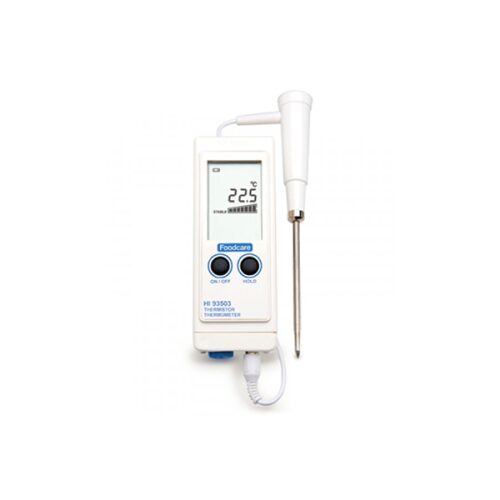 เครื่องวัดอุณหภูมิอาหาร
เครื่องวัดอุณหภูมิอาหาร 